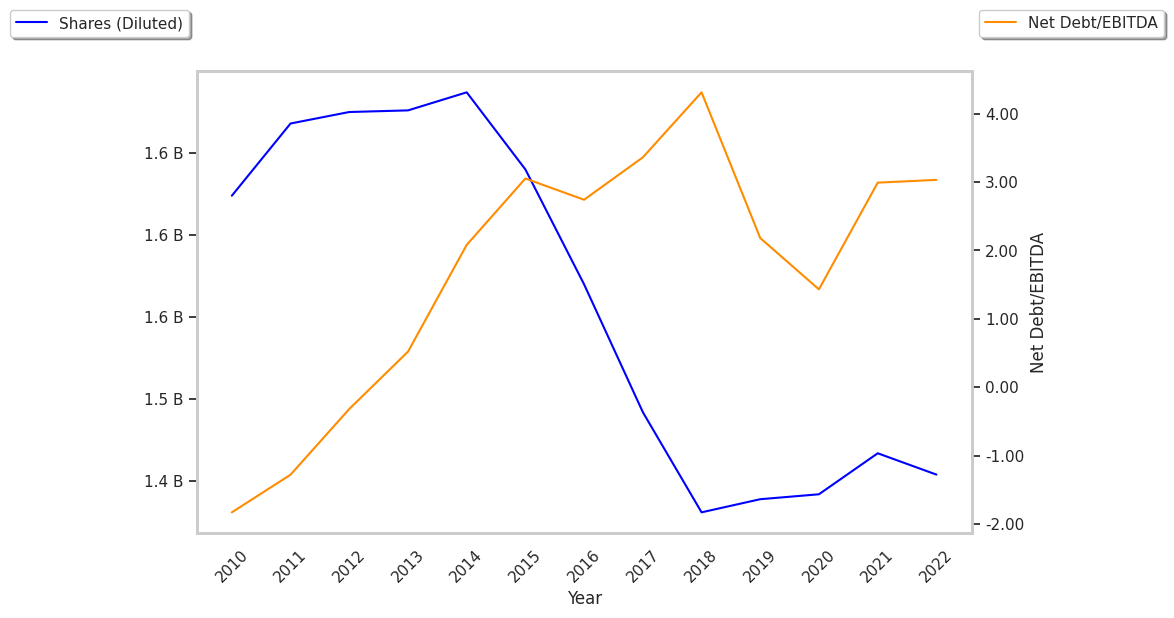Auto Manufacturers company General Motors is taking Wall Street by surprise today, falling to $46.41 and marking a -3.5% change compared to the S&P 500, which moved 0.0%. GM is -15.82% below its average analyst target price of $55.13, which implies there is more upside for the stock.
As such, the average analyst rates it at buy. Over the last year, General Motors shares have outstripped the S&P 500 by 3.9%, with a price change of 28.4%.
General Motors Company designs, builds, and sells trucks, crossovers, cars, and automobile parts; and provide software-enabled services and subscriptions worldwide. The company is a consumer cyclical company, whose sales figures depend on discretionary income levels in its consumer base. For this reason, consumer cyclical companies have better sales and stock performance during periods of economic growth, when consumers have more of an incentive to spend their money on non-essential items.
General Motors's trailing 12 month P/E ratio is 5.7, based on its trailing EPS of $8.19. The company has a forward P/E ratio of 4.7 according to its forward EPS of $9.91 -- which is an estimate of what its earnings will look like in the next quarter. As of the second quarter of 2024, the average Price to Earnings (P/E) ratio for US consumer discretionary companies is 22.06, and the S&P 500 has an average of 27.65. The P/E ratio consists in the stock's share price divided by its earnings per share (EPS), representing how much investors are willing to spend for each dollar of the company's earnings. Earnings are the company's revenues minus the cost of goods sold, overhead, and taxes.
A significant limitation with the price to earnings analysis is that it doesn’t account for investors’ growth expectations in the company. For example, a company with a low P/E ratio may not actually be a good value if it has little growth potential. Conversely, companies with high P/E ratios may be fairly valued in terms of growth expectations.
When we divide General Motors's P/E ratio by its projected 5 year earnings growth rate, we see that it has a Price to Earnings Growth (PEG) ratio of 0.43. This tells us that the company is largely undervalued in terms of growth expectations -- but remember, these growth expectations could turn out to be wrong!
To deepen our understanding of the company's finances, we should study the effect of its depreciation and capital expenditures on the company's bottom line. We can see the effect of these additional factors in General Motors's free cash flow, which was $9.96 Billion as of its most recent annual report. Over the last 4 years, the company's average free cash flow has been $8.29 Billion and they've been growing at an average rate of 7.4%. With such strong cash flows, the company can not only re-invest in its business, it can afford to offer regular returns to its equity investors in the form of dividends. Over the last 12 months, investors in GM have received an annualized dividend yield of 0.8% on their capital.
Another valuation metric for analyzing a stock is its Price to Book (P/B) Ratio, which consists in its share price divided by its book value per share. The book value refers to the present liquidation value of the company, as if it sold all of its assets and paid off all debts). General motors's P/B ratio of 0.77 indicates that the market value of the company is less than the value of its assets -- a potential indicator of an undervalued stock. The average P/B ratio of the Consumer Discretionary sector was 3.18 as of the second quarter of 2024.
General Motors is likely undervalued at today's prices because it has a Very low P/E ratio, an exceptionally low P/B ratio., and generally positive cash flows with an upwards trend. The stock has strong growth indicators because of its weak operating margins with a positive growth rate, and a PEG ratio of less than 1. We hope this preliminary analysis will encourage you to do your own research into GM's fundamental values -- especially their trends over the last few years, which provide the clearest picture of the company's valuation.



